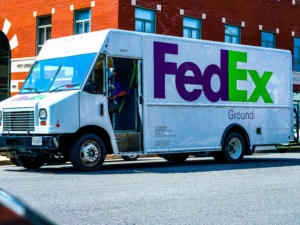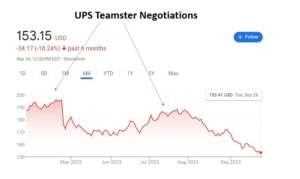2024: Year of Shipping Challenges
2024 Could Present Greater Challenges And Significant Disruptions
Our friends at OEC Group have provided an interesting perspective on what international shippers might expect in 2024. It is with these challenges in mind, that we urge our clients and prospective clients to reach out to ICC to schedule a free, no obligation, consultation with one of our Supply Chain experts. Our goal would be to review your shipping plans for 2024 and discuss how ICC, with our vast network of global logistics solution providers, can assist you in ensuring your 2024 will be pain free and cost efficient.

“2023 will be remembered as a unique year in supply chain history because of the precipitous fall of rates from historic highs back to pre-pandemic levels. As 2023 ends, experts believe that 2024 may have its own set of surprises and challenges that could disrupt and alter the industry’s landscape.”
One challenge, the practice of blank sailings, was a defining problem for many shippers in 2023. It is expected to press on throughout 2024. The continuation of aggressive blank sailing program is a result of the carriers direct need to control capacity as the ratio of supply and demand slips through over supply as a result of new ship orders being delivered to market throughout 2023 and 2024. This will force both importers and exporters to continue being agile with their supply chain strategies while carriers continue to struggle with balancing wildly fluctuating vessel capacity with shipper demand.

This continued practice, and the volatile rate swings that come with it, will make for a very interesting contract season. To have success, shippers should partner with a third party logistics provider that can tackle their long-and-short-term fluctuating capacity and price requirements, and advanced planning options.
The call for sustainability is another subject that will remain at the forefront, especially as climate issues continue to plague the industry and the movement of vessels. Issues such as draft restrictions and vessel limitations through the Panama Canal will be increasingly impactful as we move into the new year, and experts will consistently monitor other critical waterways around the globe, such as the Mississippi and Rhine Rivers, that have already had problems due to lack of rainfall.
“These highly delicate problems could have volatile consequences that will potentially reverberate throughout the industry for years to come. Simply turning a page on a calendar will not erase these and other serious concerns that are affecting the industry,” said Anthony Fullbrook, President of OEC Group’s Northeast Region. “Shippers need to align themselves with professionals that can give them as many options as possible to ensure the short and long-term viability of their supply chain. Those who fail to do this will suffer severe consequences.”
The last few months of 2024 could be especially volatile due to potential labor action at U-S East and Gulf Coast ports as the International Longshoremen’s Association’s (ILA) contract expires at the end of September. The ILA, led by its president Harold J. Daggett, has been outspoken about its determination to negotiate hard before the current contract ends. Union representation is digging in on port automation, worker pay and benefits, and compensation for working through the pandemic.

If negotiations go awry, then shippers, carriers, and providers could see a situation far worse than what was experienced earlier this year with ILWU-PMA contract disagreements. Slowdowns and other negotiating tactics could occur at any time during 2024, which could significantly disrupt supply chains and drive rates dramatically upward.
“Importers and exporters need to plan ahead and be open to all options as 2024 could be a very rough ride. Having as many options as possible will be the key to succeeding in this environment,” said Peter Hsieh, Vice President of Sales and Marketing for OEC Group’s Northeast region. “The more port pairings, intermodal options, and final trucking and distribution solutions shippers have access to, the better chance they’ll have at minimizing delays, building a reliable supply chain, and beating what promises to be a very challenging market.”
Full article from OEC Group can be found here: https://www.oecgroup-communications.com/post/shippers-beware-2024-could-present-greater-challenges-and-significant-disruptions














